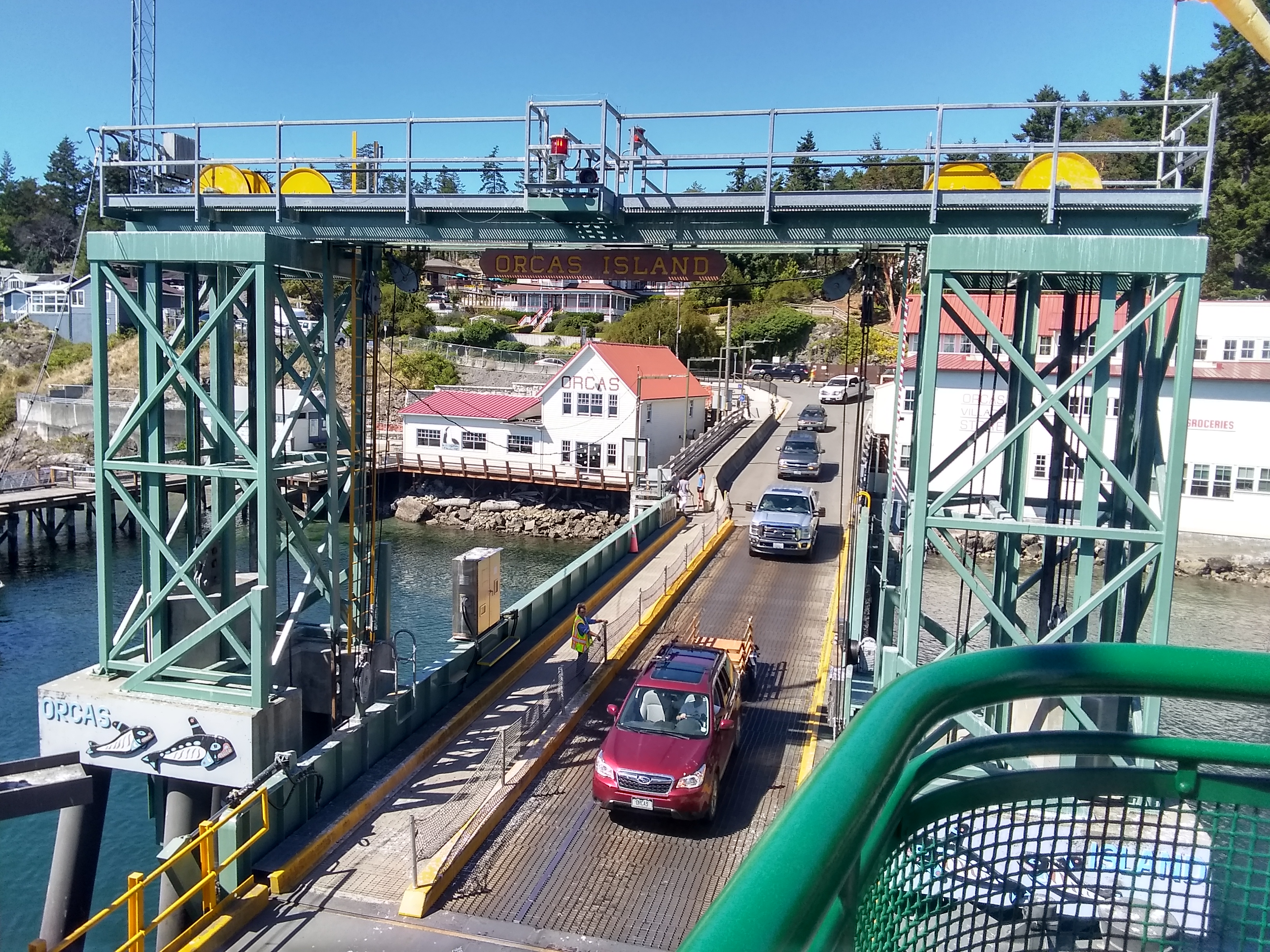No adventure ever plays out exactly like you imagine before it starts. That was especially true for my recent trip to Orcas Island, off the northern coast of Washington. The ferry ride was beautiful, as I expected. It was the campground experience that was weird.
A beautiful day for a ferry ride through the San Juan Islands:
I drove around the Island after leaving the ferry, over to Moran State Park where I had a reservation. Shortly after I pulled the van into my site, set up my cooking area, and offloaded firewood, the Ranger came over and told me they were removing a tree nearby. I would have to vacate my site for a few hours. He did not offer much information, only that it was a dangerous tree that needed to come down before it hurt anyone. The tree was back in the forest but it was over 200 feet tall and posed a danger in the campground because it could also bring other, closer trees down as it fell. They would be pulling the tree down after installing some kind of rigging because cutting it was too dangerous. As I pulled out, the Ranger wrapped “Danger” tape around the area, making it look like a police crime scene. It seemed appropriate. I came here, in part, to see this rare old-growth forest and its towering trees. Watching one fall seemed like a momentous occasion, albeit a sad one.
I pulled into the day-use parking nearby and hung out in the van, staring up the slight hill and into the old-growth forest. Shortly after, park aids taped off the day-use area beyond the parking lot and then stood guard, speaking occasionally into their radios. After a half-hour, I heard a voice on the radio shout out “It’s coming down” I saw the tree-top sway and then heard an enormous “crack.” A second later, however, the treetop sprang back and the tree stood tall. More voices on the radio, but all I could understand was, “We will try again.”
I stepped out of the van and started talking to the park aid.” What is going on,” I asked? “Oh, the tree broke the rigging and they have to set it up again,” I asked what had happened to the tree in the first place. “Why does it need to come down?” She told me they had a bad winter storm last winter and over 50 trees fell. After that, they had arborists check out every tree that was potentially a danger to the campground and they identified this tree as a threat. Apparently, it was split and rotting on the inside, or so they said.
I returned to my perch in the van. About a half-hour later I heard excited voices on the aid’s radio and the treetop started to sway again. I heard a smaller crack then it popped back up. The crew fixed the rigging one more time and, one more time, the feisty tree snapped back when they pulled. After a few minutes, I wandered over to the park aid again and asked what was next. “We have opened the campground back up,” she told me. “You can return.” What about the tree? They decided to wait unto mid-September after visitors thin out and will blow it up.
What? Wait! Blow it up. The tree was nowhere near ready to come down. I witnessed the vigor and tensile strength in that 200-foot tree as it broke free of the rigging three times. Maybe it was a mistake to think the tree posed a danger. Okay. They made a mistake. Let it be. Or, had they now damaged it enough in the process of trying to bring it down that they really did need to take it down? And how much collateral damage would occur as they blew it up? We are talking a rare old-growth tree and I felt like I was witnessing a major debacle. I also felt that no one probably cared about that one tree. But, I am weird like that. One tree, yes, but it was a relic, a rare beast in a region that is heavily logged.
I started up the van and headed back to the campground. As I drove, I got spooked. What if they had really damaged the tree and it was now poised to fall during the night? My campsite was right in its path, evidenced by the crime scene tape the ranger was taking down. What if a wind came up while I was sleeping and finished the work started by the tree experts? What if, what if, what if. I can’t say I was scared. Rather, it seemed foolish to sleep under a tree that could land on my head. It does not happen often, but it did last month. A woman on the Colorado Trail died when a tree landed on her campsite in the middle of the night.
Without hesitation, I told the ranger I wanted to move to a safer site. Actually, I said, “There is no way I am sleeping in the path of that tree.” “We are full”, he said with authority. Well, I know from volunteering in State Parks that they always have “reserve” sites that are not reservable through the system. They save them for emergencies or whatever. It has never been totally clear to me why they have empty sites every night, but at that moment I was glad they did. “Do you have any reserve sites,” I asked nonchalantly. “Oh, sure, one up there and another down there”, he said pointing in several directions.” Great, I will take the one down there, it seems farthest from the tree.” The ranger called the gal who was working up at the entrance gate, and she made the changes in the computer. I was free to move after I gathered up my things.
Unfortunately, I moved to a tiny site right next to the road. Reserve sites are usually the least desirable and this one was no exception. Sigh. Feeling disappointed and still upset about the tree that didn’t need to come down, I pulled in and unloaded the firewood and kitchen stuff once again. What should we do, Tango?” He wagged his tail and reminded me that it was time for his dinner. Then, I started a nice blaze it the firepit and settled in. I was still unsettled by the tree that wouldn’t fall and the possibility that a perfectly good old-growth tree was now irreparably damaged. What a waste of time and energy, I thought. What will become of the magnificent tree?
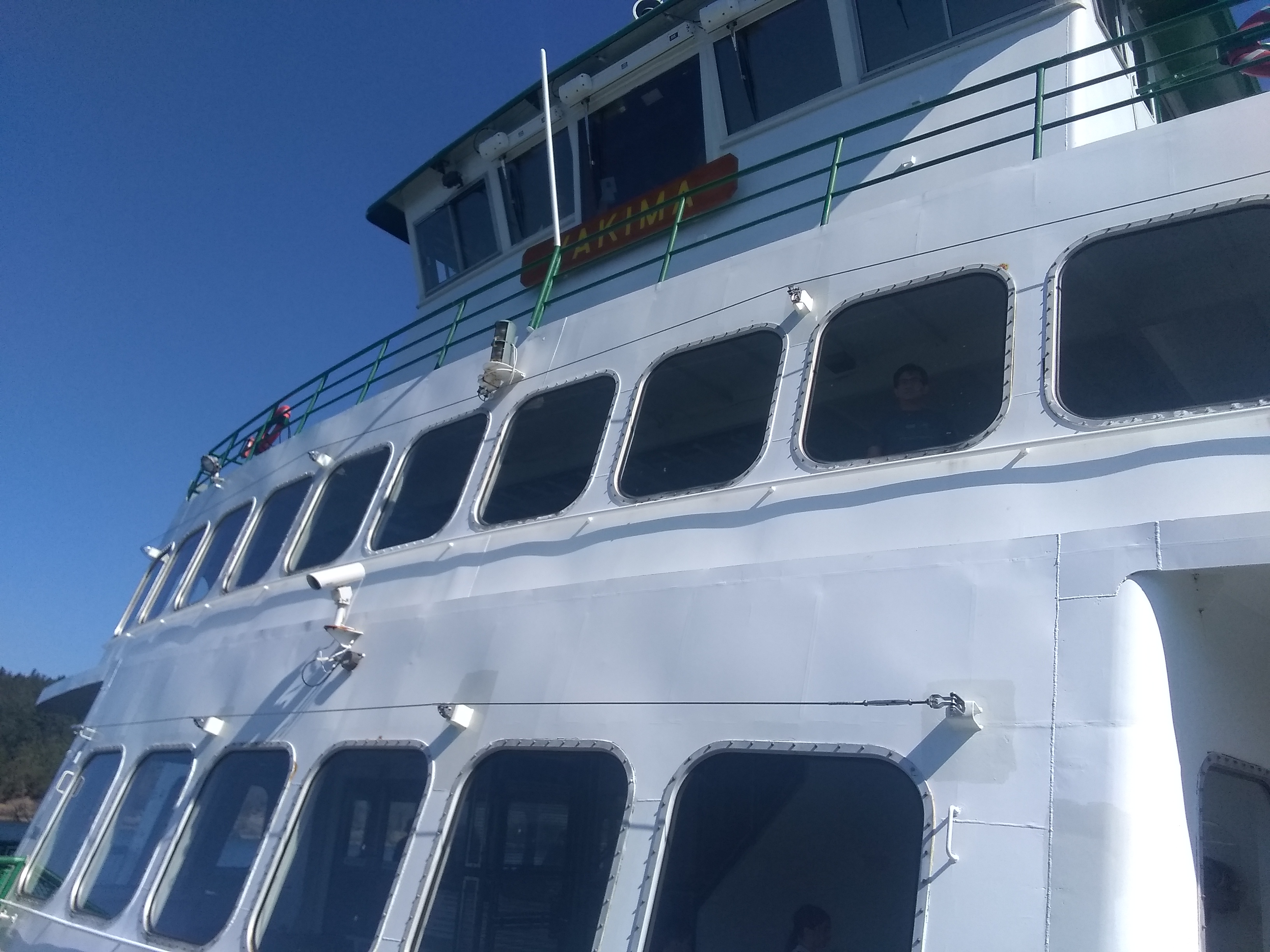
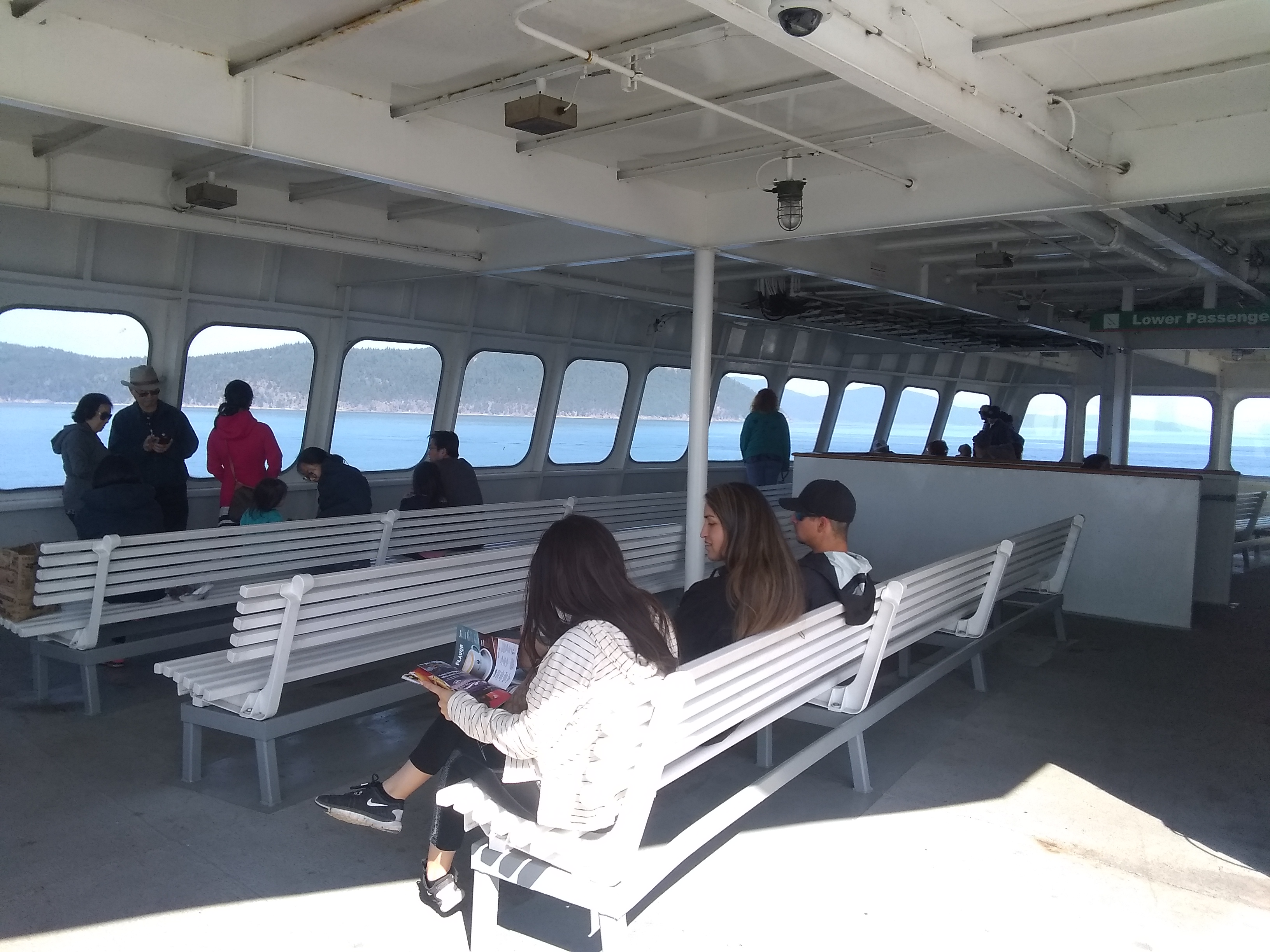
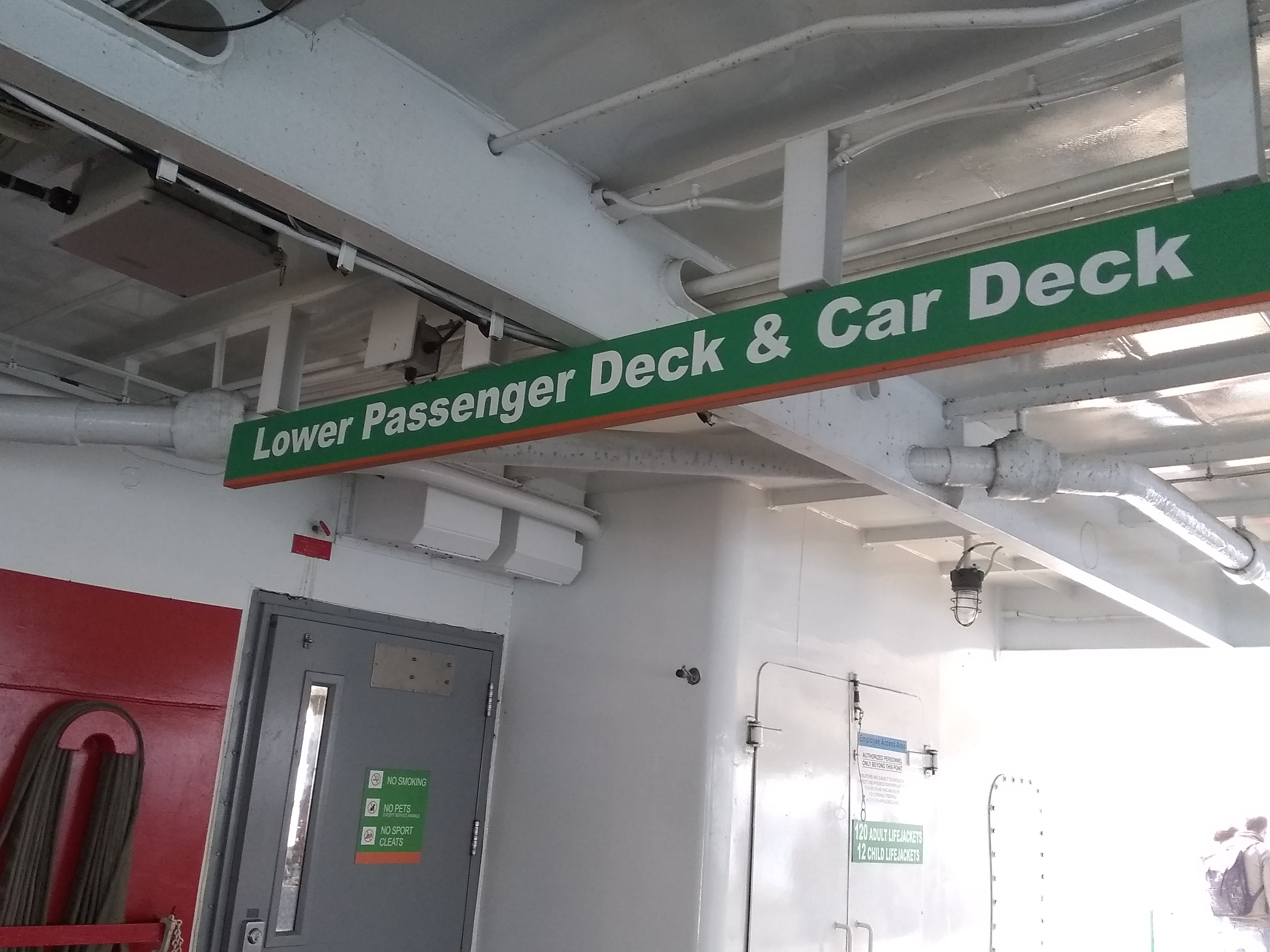
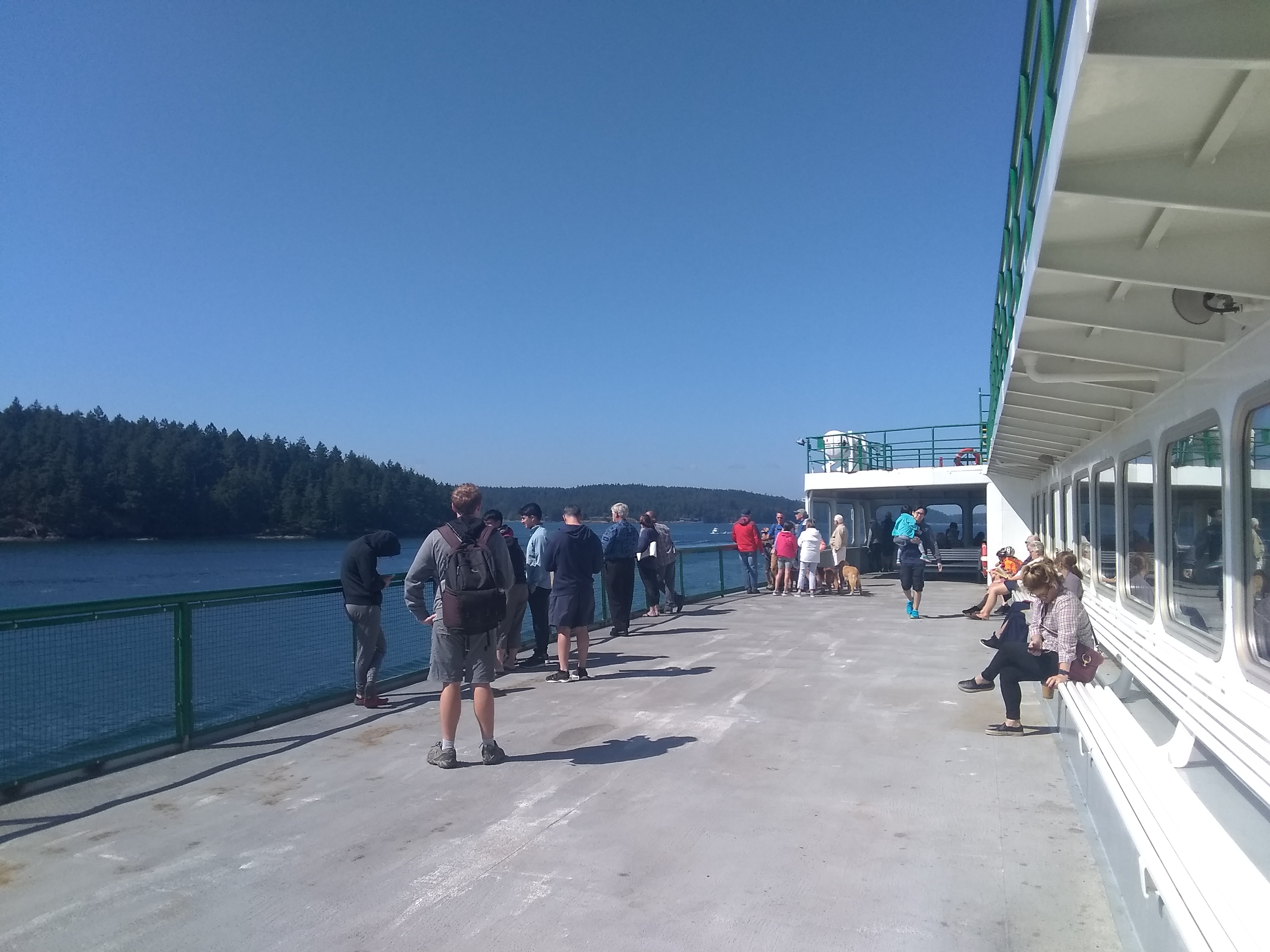
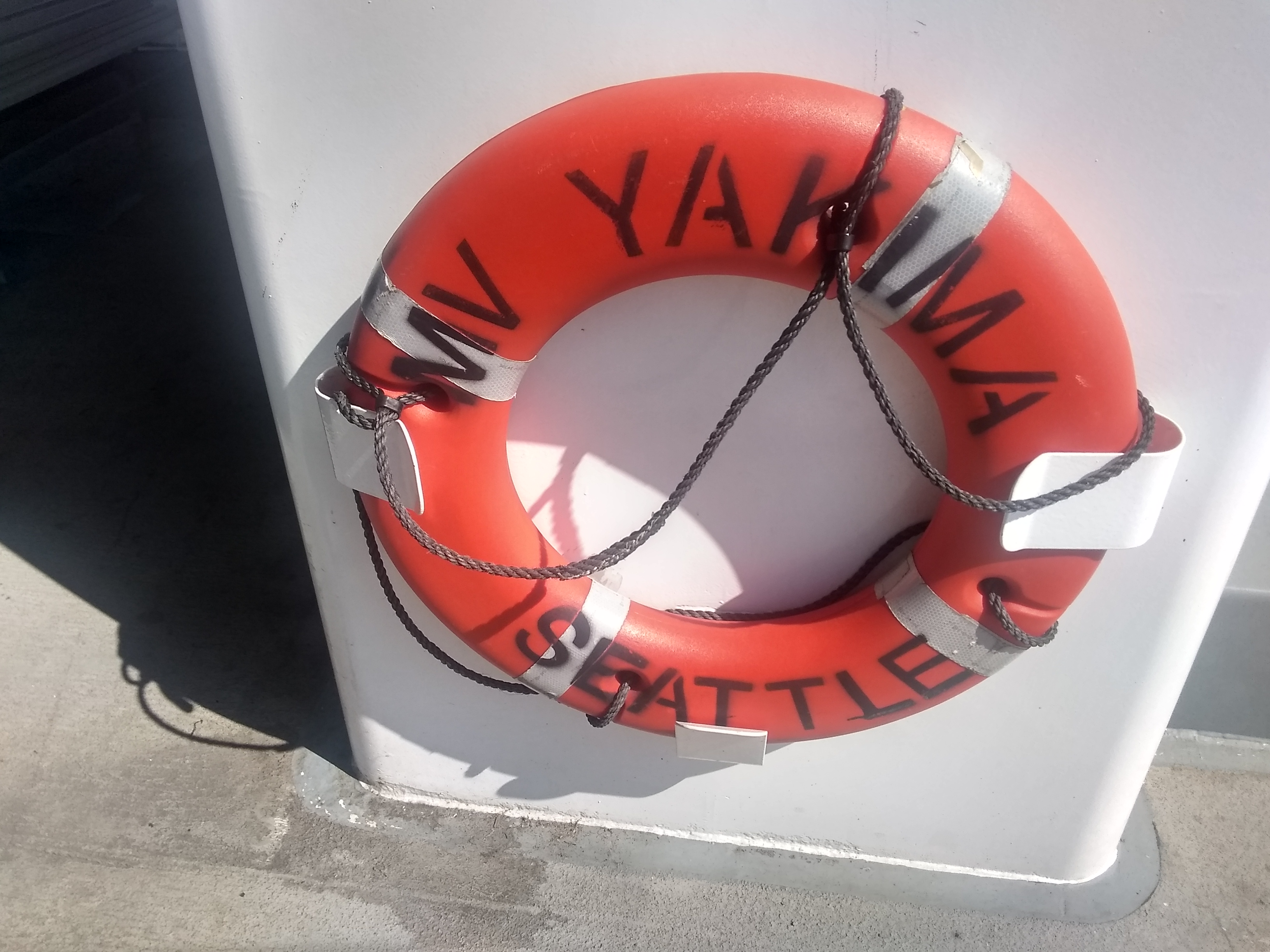
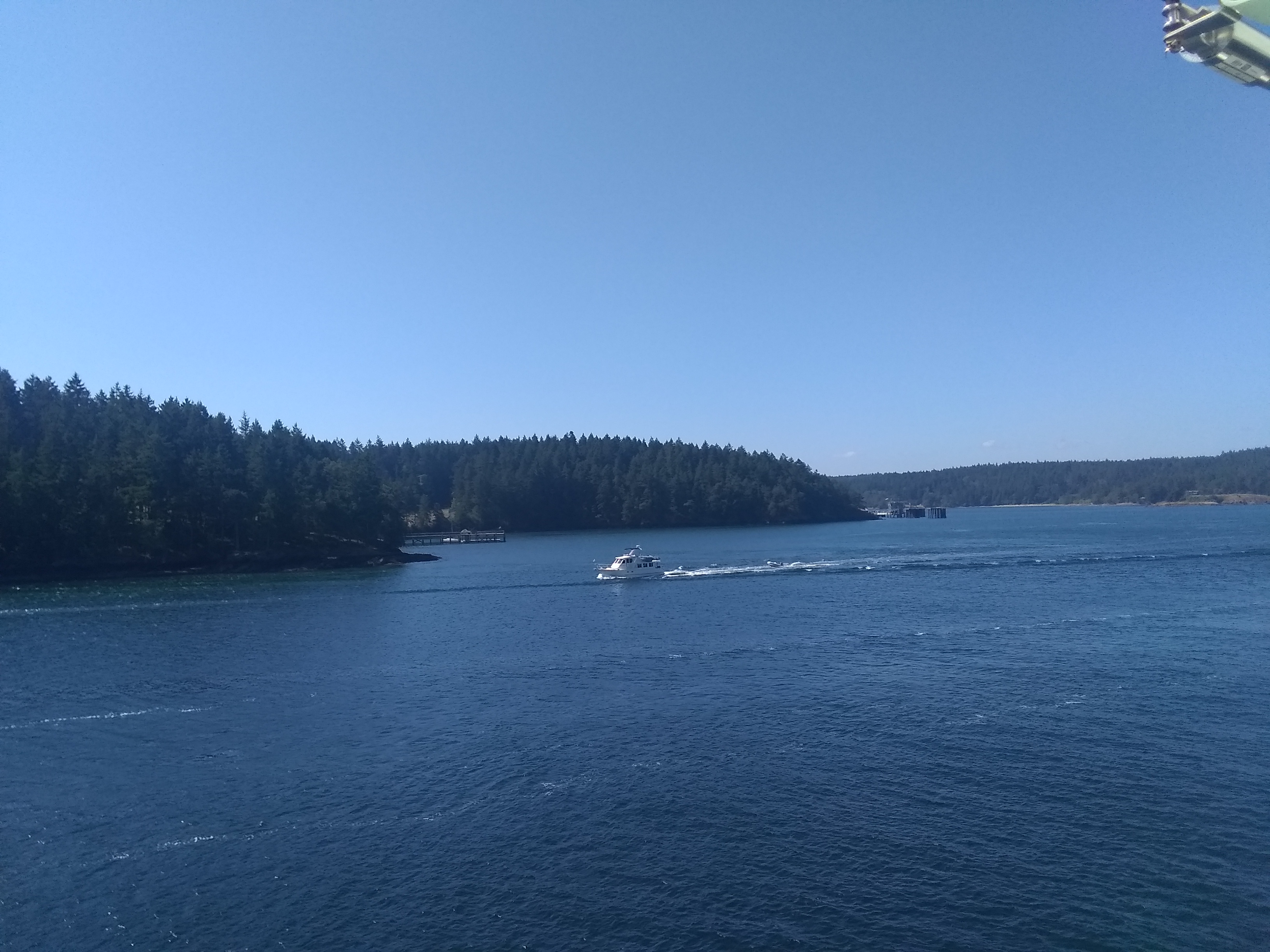
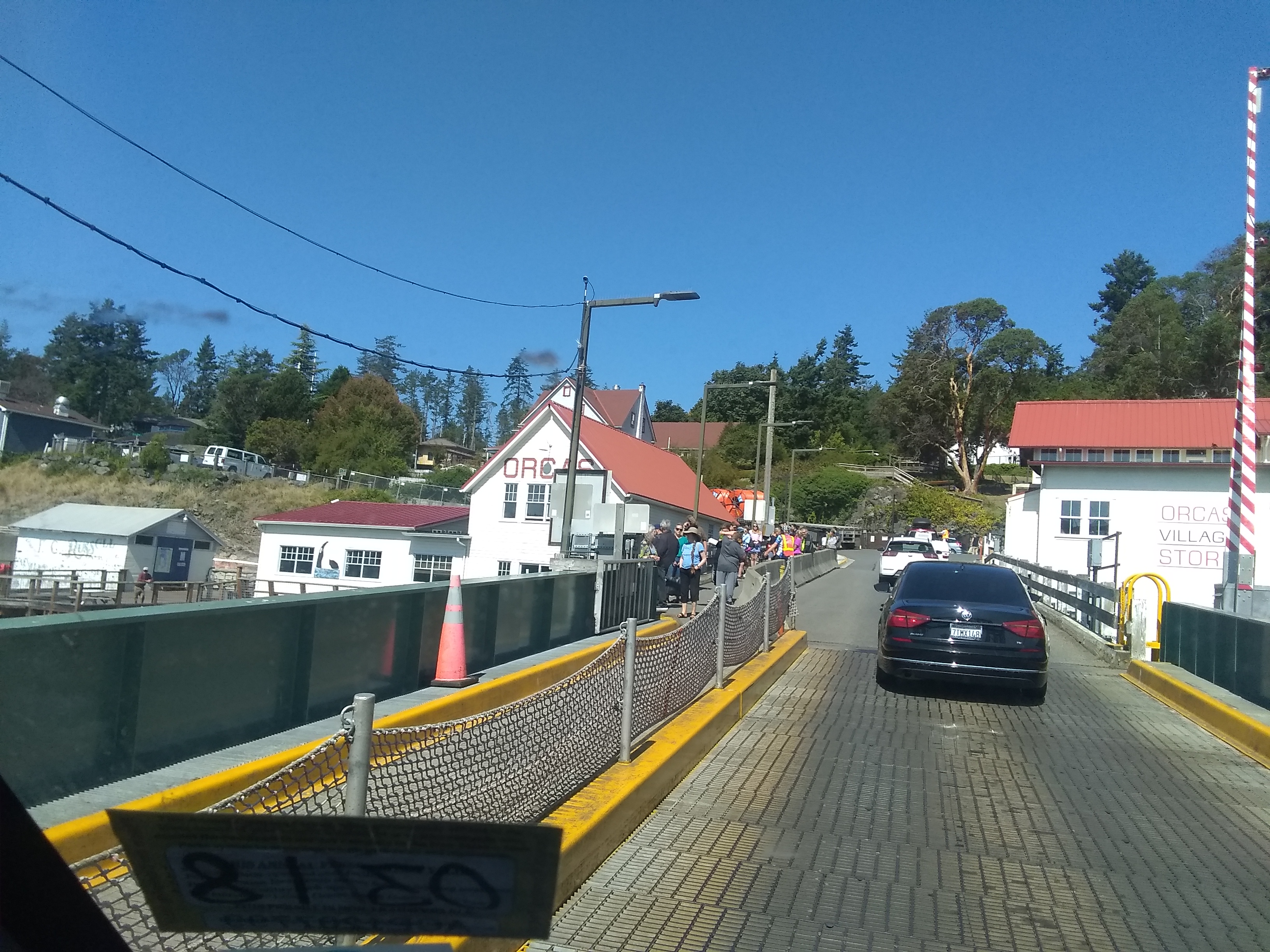
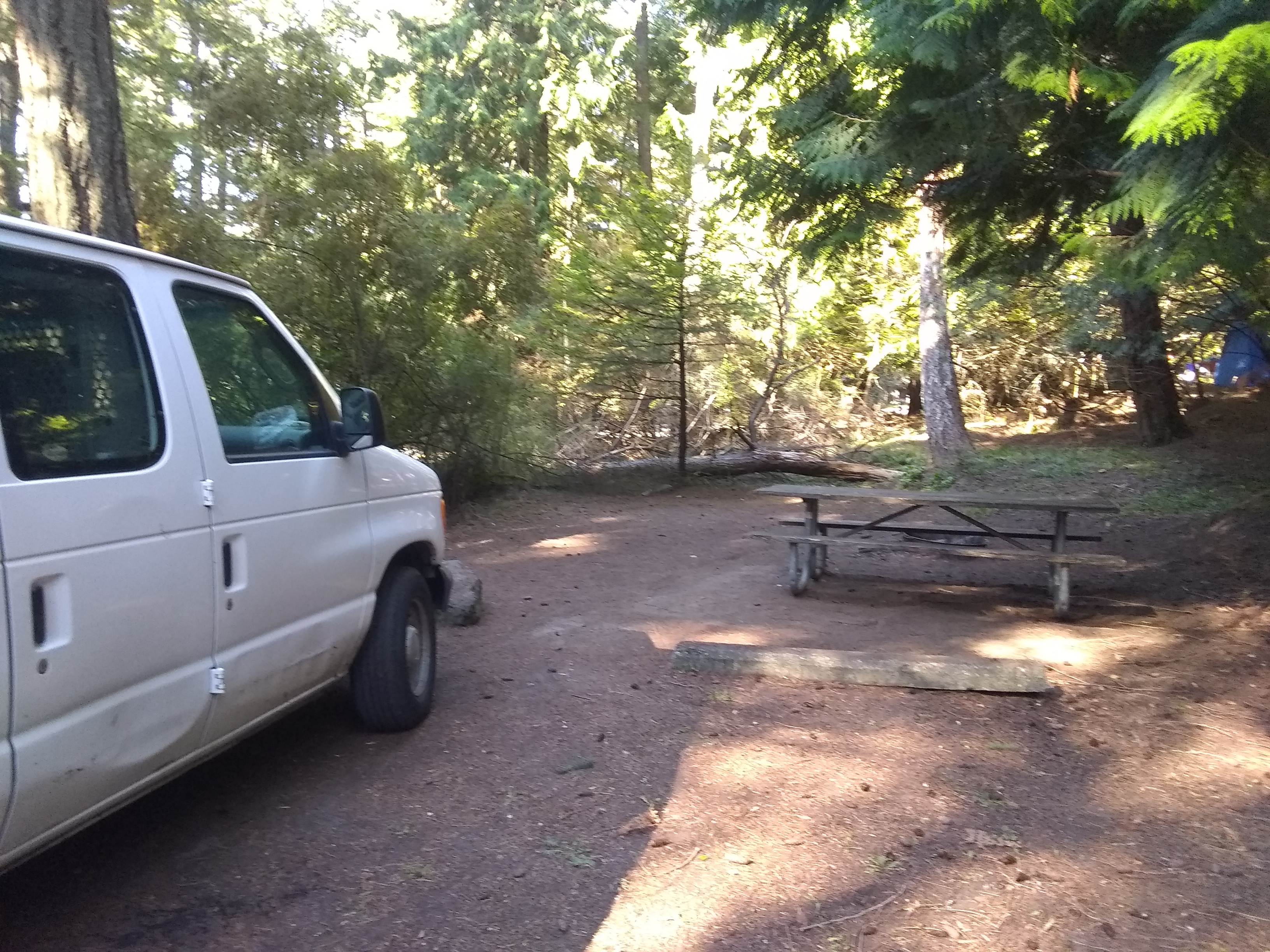 The next day, Tango and I took a hike around the lake
The next day, Tango and I took a hike around the lake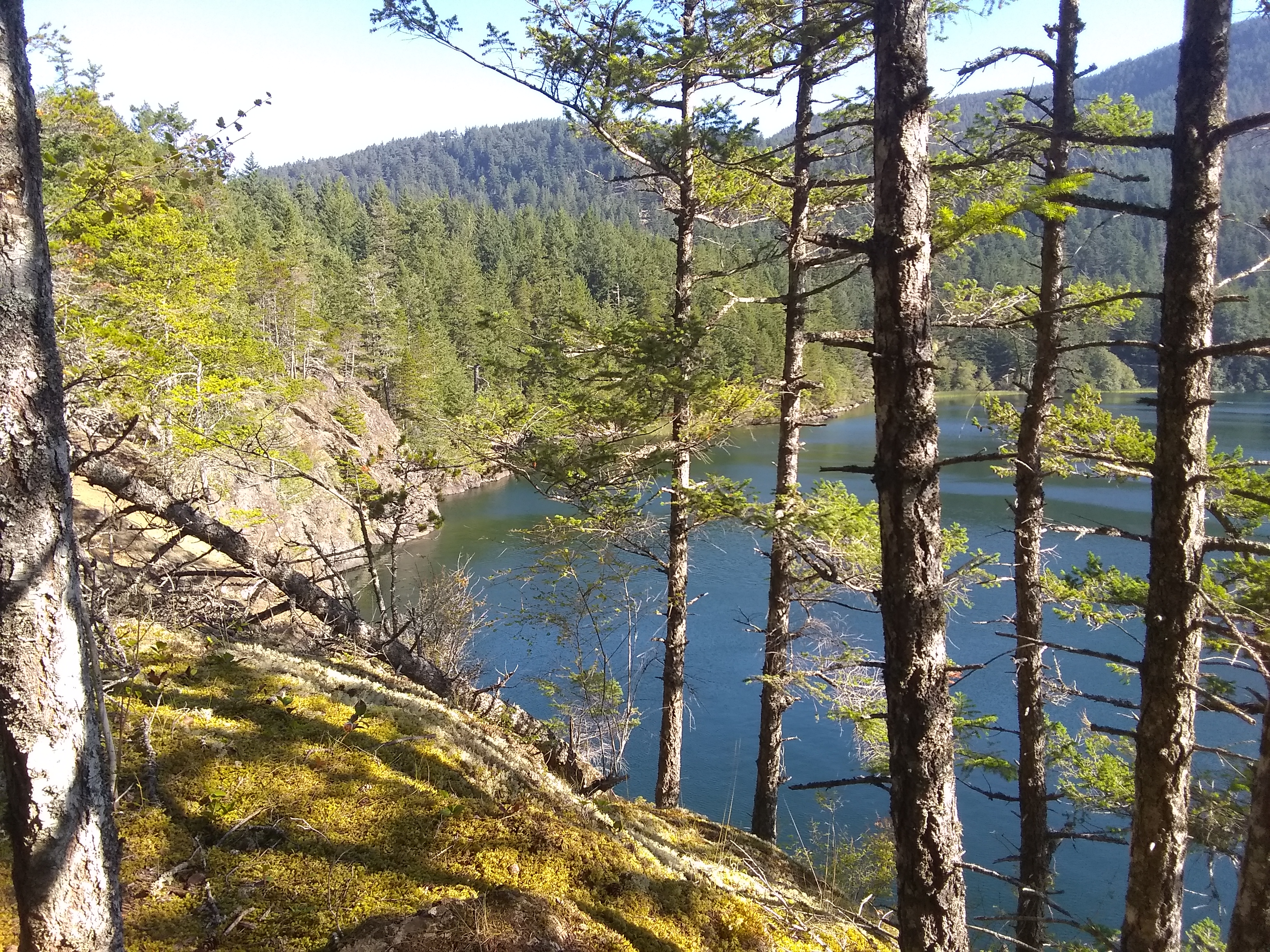
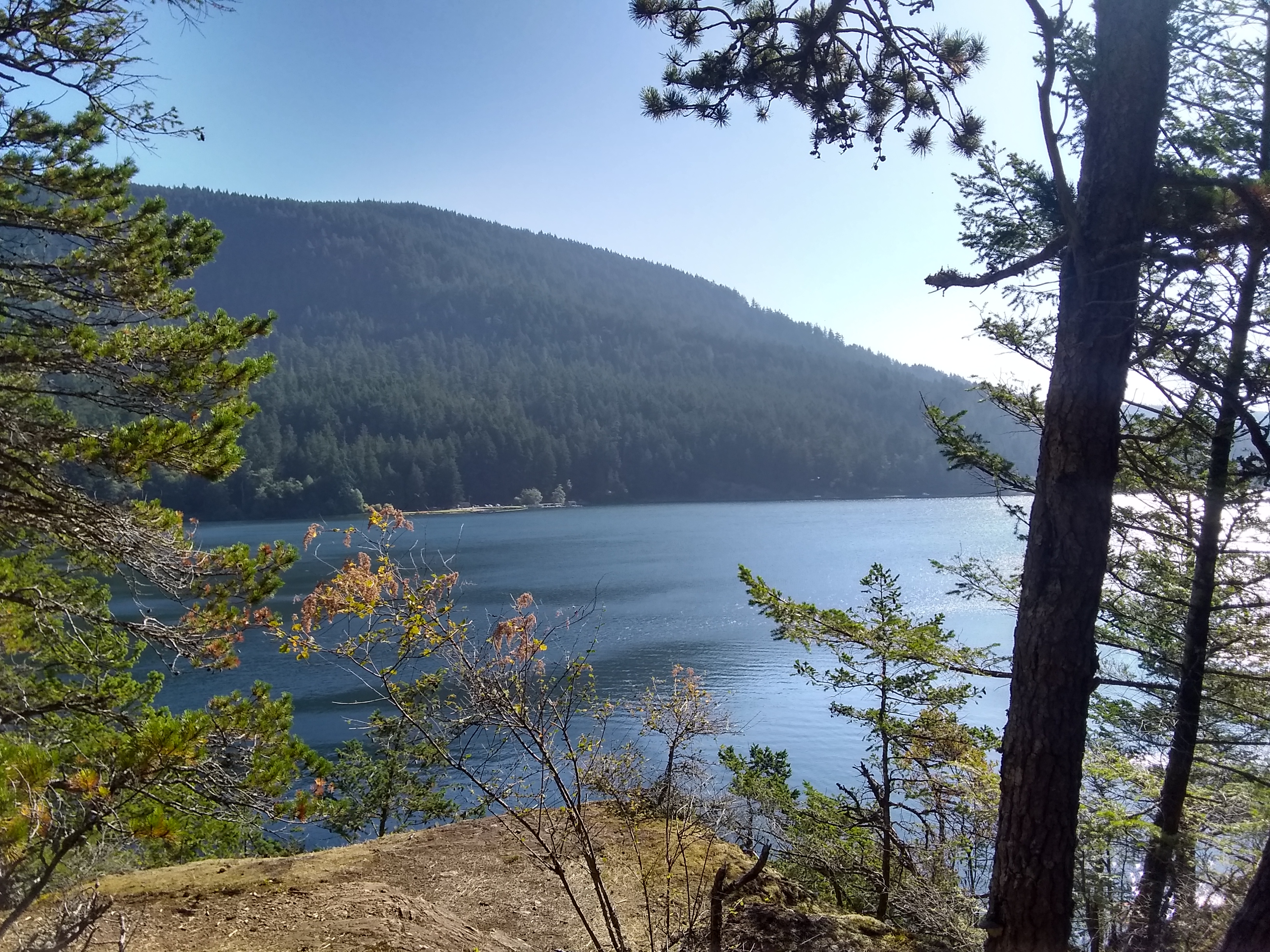 Then, we walked around the little town, Eastsound
Then, we walked around the little town, Eastsound

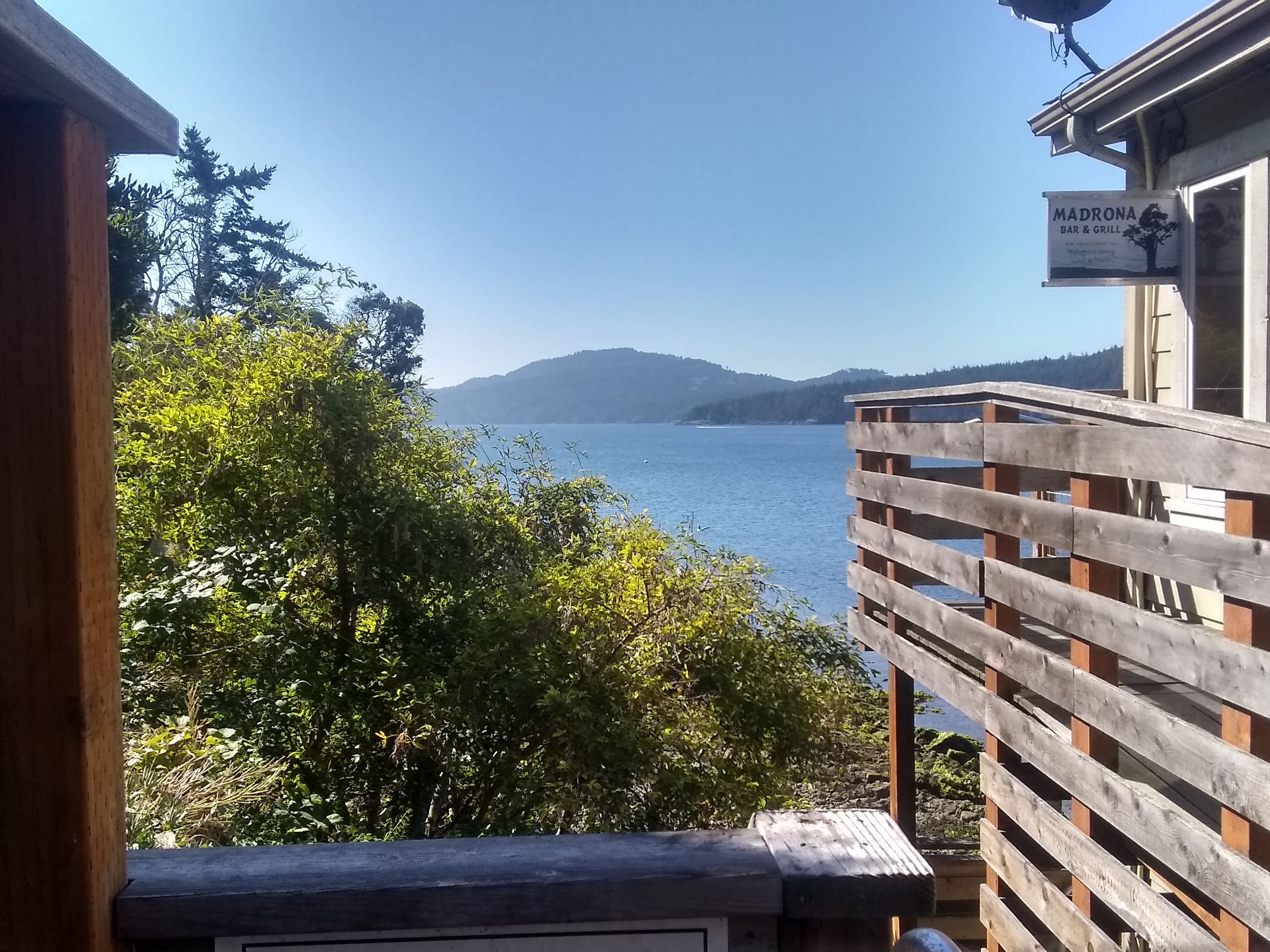 Boarding the ferry to go back to Deception Pass State Park
Boarding the ferry to go back to Deception Pass State Park